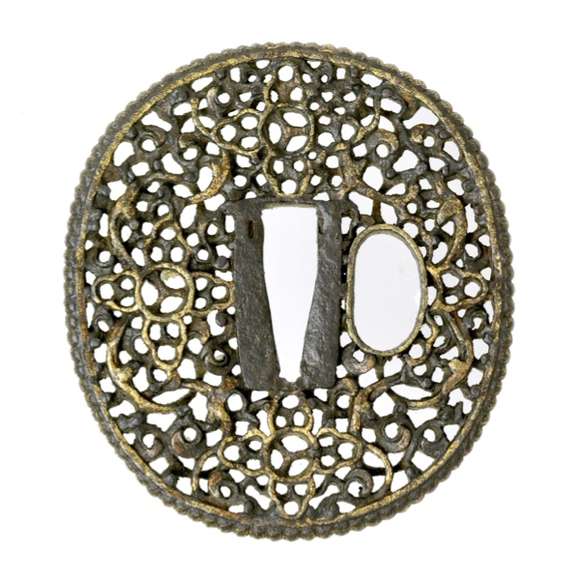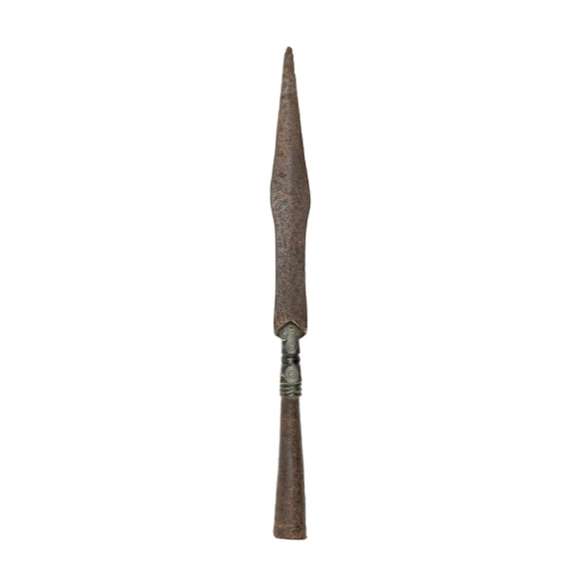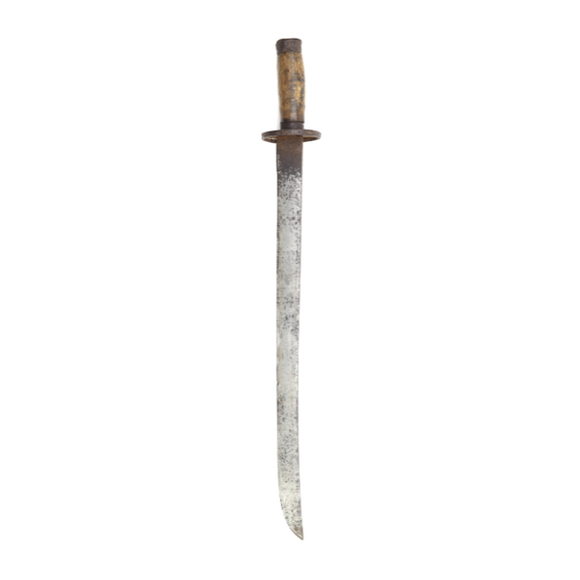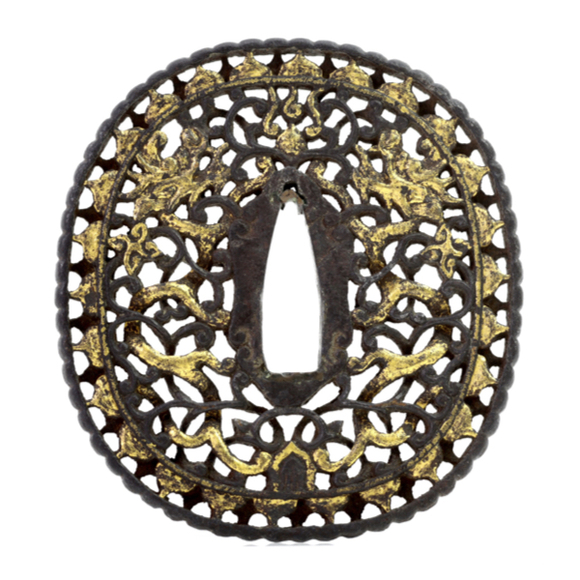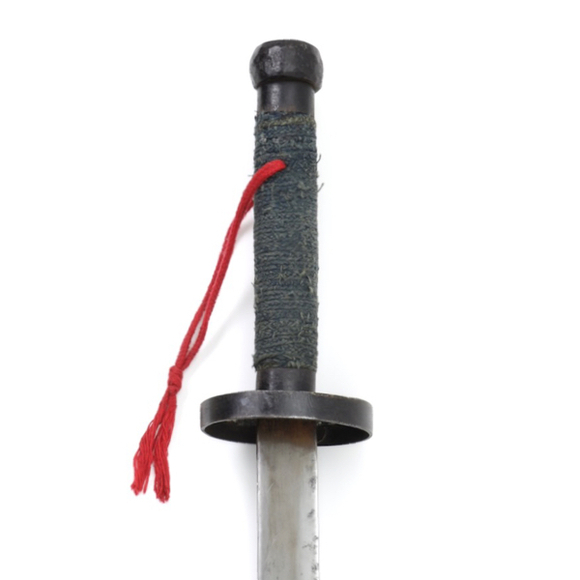A very rare Chinese saber guard dating from the height of the Qing dynasty.

Nock to nock: 163 cm
Tip to tip: 172 cm
Knee to tip: 27 and 28 cm
Nock to bridge: 20.5 cm
33 x 12 mm
540 grams
35 - 40 pounds
China, Qing dynasty
Rare translucent buffalo horn, wood, sinew, birch bark, cork, pigments, lacquer.
Early 19th century
A very rare and interesting Chinese/Manchu bow made with translucent horn strips over a wooden core that was treated with pigment prior to gluing. The final result is a bow with horn bellies that appear to be a deep, translucent cinnabar red. Such translucent horn was very rare and reserved for the better bows.
The back of the bow is covered with thick birch bark with a camouflage pattern that was a stylized rendition of the stripes of a tiger. The handle is covered with cork, on either side is white stingray skin. The long, slender ears are also covered with white ray-skin and tipped with translucent horn nocks, probably of the same set of horns that the bellies are made from.
The ears are normally attached by means of v-splices, and in case of translucent horn, these can usually be seen on the belly side. In this case, no v-splices are to be seen which is probably a clever trick by the bowyer to show off his skill. The construction is perhaps one with either a veneer of wood over the v-splice to conceal it.
Decoration
Besides the fancy materials, the decoration of the bow is otherwise quite restrained, simple but well executed with narrow lines outlining the different sections and rolling thunder patterns similar to "greek key". This is typical Manchu aesthetics, as seen on the earliest Qing bows that are known to survive, now in the Palace Museum in Beijing. Judging from the decoration as well as the shape and styles of the ears, I think this bow probably dates from the early 19th century.
Condition
Composite bows are incredibly fragile and this one remains in decent condition. One crack in the horn near one ear, and losses on the ray-skin, cork, and back. It is still structurally sound though, and with no flaking. All that is left remains in good, stable condition.
Conclusion
A very rare and rather eccentric Manchu bow, carefully crafted out of quality materials but reflecting the more humble Manchu aesthetics in the rest of its decoration. Further care by the bowyer is shown by his ability to hide the typical v-splice connection of the ears, while obviously retaining strength in that part. A show of skill clearly aimed to please the connoisseur of bows.




















Of classic shape, with a leaf-shaped blade on a socket, connected by a cast bronze base.
A standard pattern Qing military saber, but with the rare addition of a label in Manchu.
A simple utilitarian weapon, probably made for rural martial artists or militia.
In the style of northern work of the 16th and 17th centuries
Probably of Southern origin, with a straight blade and flaring tip.

